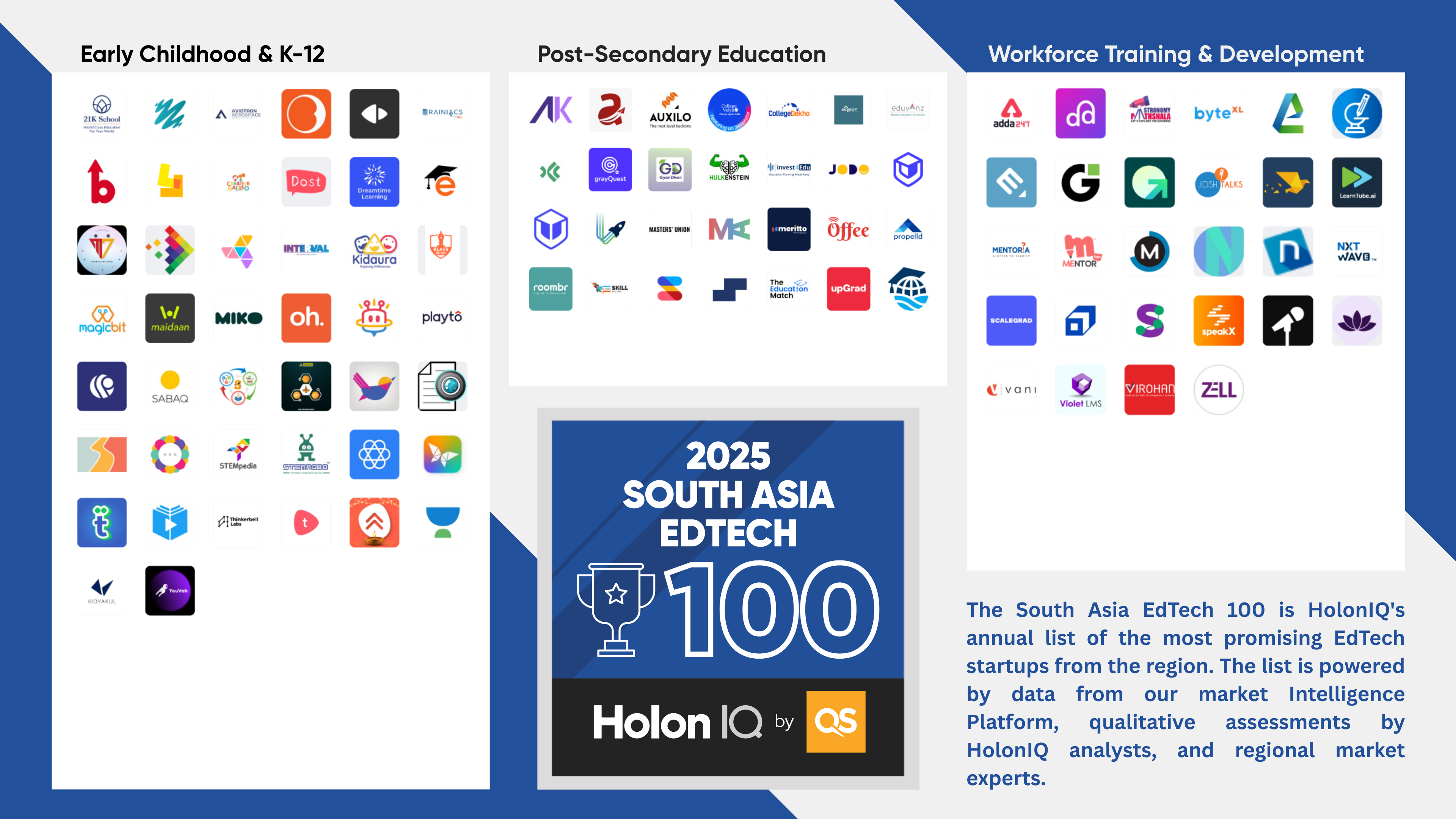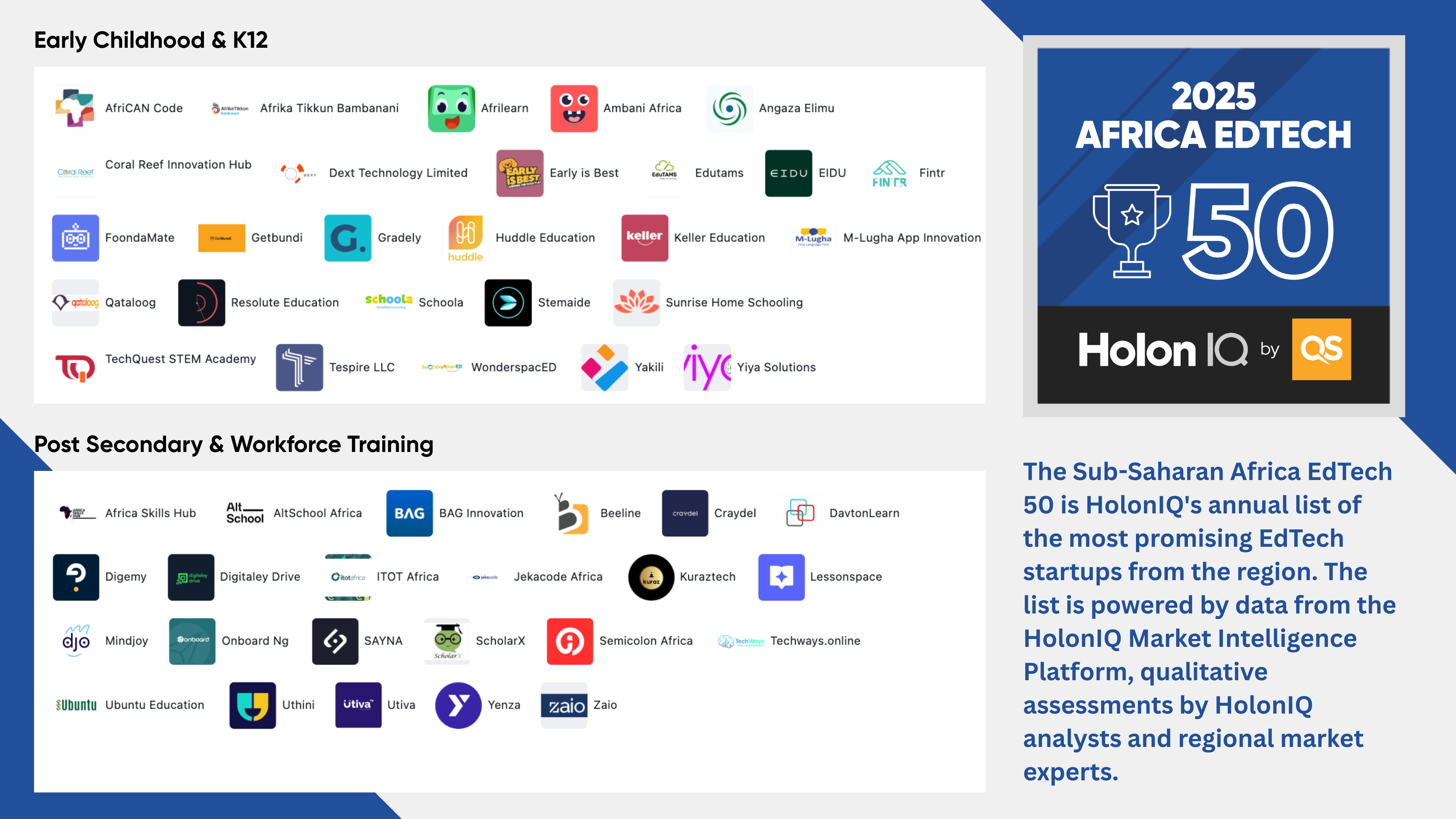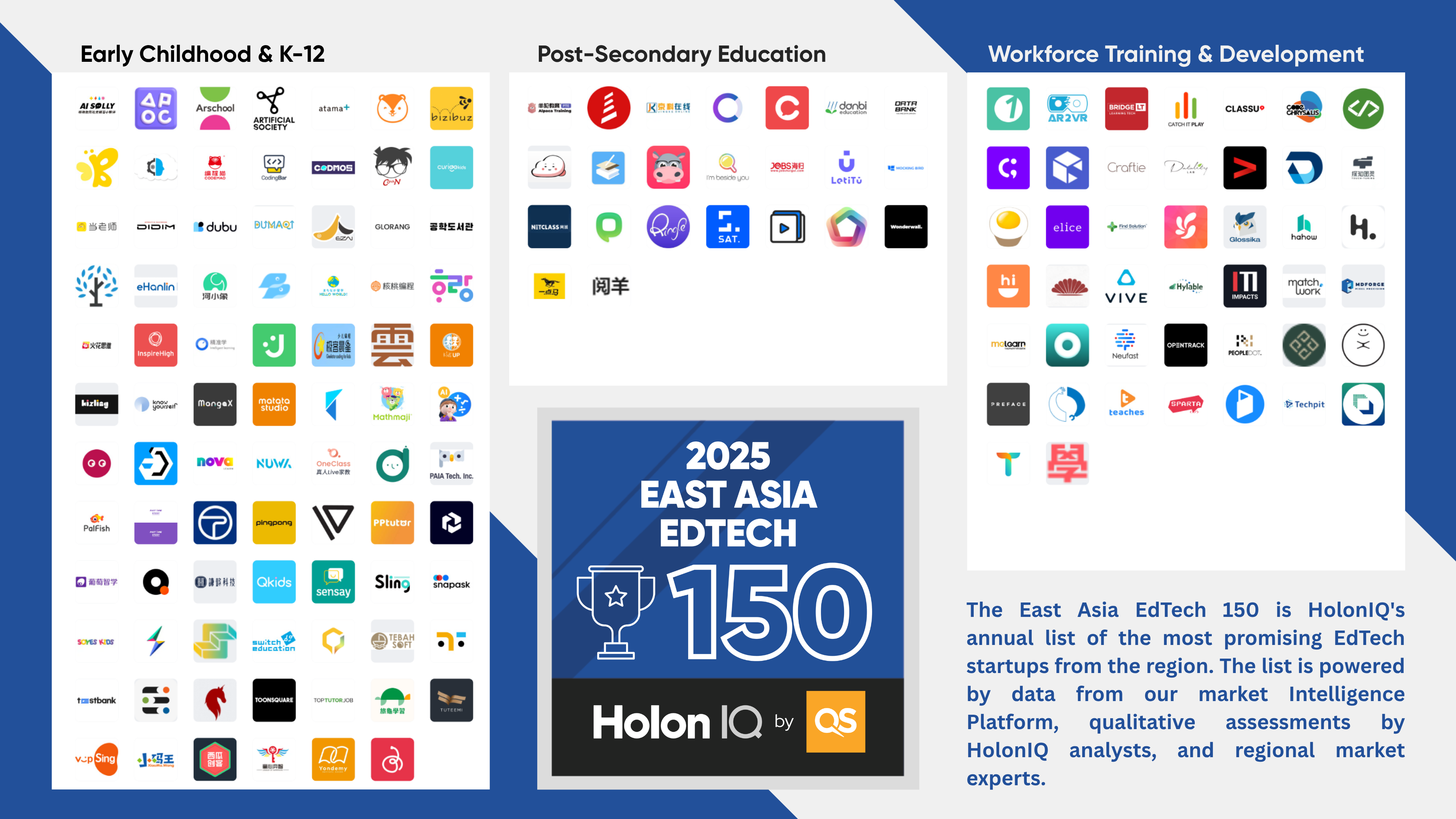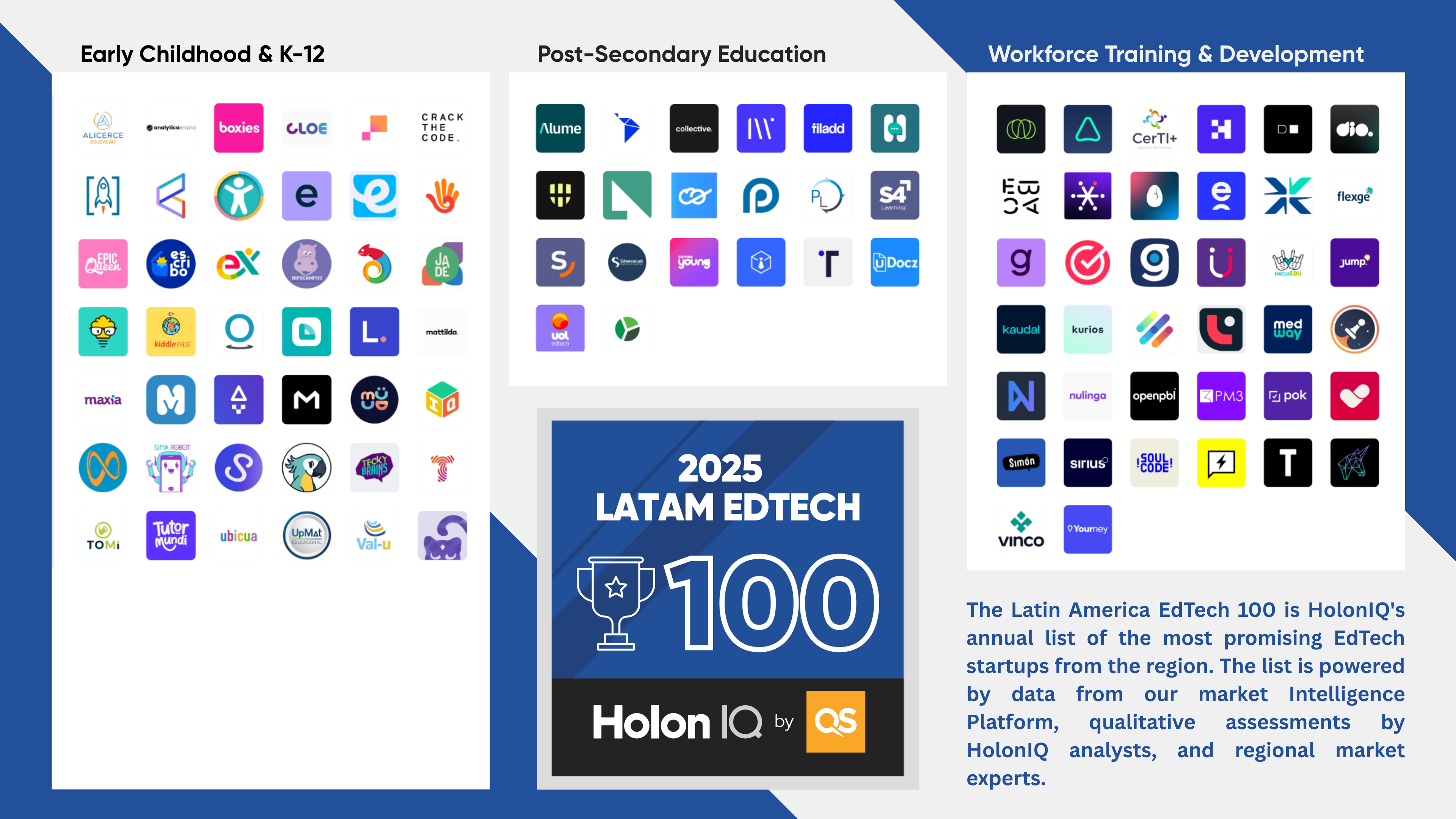9 million students, representing more than $500B in annual direct expenditure, will travel to study outside their home market by 2030. As American employers face a projected workforce shortage of 2.5 million STEM jobs by 2030, a declining youth population and urgency to revive and grow domestic capacity in strategic industries, the US must act to protect a declining share of access to the world's top talent.
Since 2018, the Global Student Flows Project at HolonIQ has mapped and forecast the flow of international students studying at higher education institutions around the world. Powered by leading experts and economists from around the world, a proprietary global flows framework and advanced technology to map and project over 10,000 unique country-to-country flows each year, the initiative aims to inform governments, universities, institutions and firms around the world in setting strategy, policy and allocating resources to support the growth of international education.
With the post-pandemic resurgence of student mobility, the Global Student Flows Project is stepping up to support stakeholders with more detailed forecasts and analysis, starting with the world's leading study destination, the United States. This research note outlines preliminary findings from a 12 week effort including over 40 interviews with policy makers and economists, source and destination country higher education experts and the latest versions of our global flows qualitative framework and quantitative forecasting models.
The Project will be briefing thousands of Presidents, Deans, Faculty and Staff at the American Council on Education's Annual Meeting in Washington D.C. this week in addition to IIE, NAFSA, and other leading experts to gather valuable insight and feedback that will be incorporated into the final public Open-Source Briefing on Monday, May 22, 2023 at 4pm ET. This first major US forecast baseline will establish a foundation to build on each year as OpenDoors release fresh official historic data at the end of each calendar year. The Global Student Flows Project will syncronize with IIE/OpenDoors data timelines, releasing a fresh forecast and outlook in the first half of each year following deep expert interviews and quantitative modeling incorporating the 10,000 plus unique country-to-country flow combinations and deep dives on other major destination flows such as Australia, Canada and the United Kingdom.
See the endnotes for more information on the Global Student Flows Project, our Methodology and contact details to reach out and learn more about becoming a Strategic Partner of the project.
Figure 1. Preliminary Projections for Global Student Flows, 1970-2030P

By the late 1970s, more than 1 million students were traveling each year to study overseas. By 2019, that number was over 5 million, representing $196B USD of direct annual expenditure. International education has been through its fair share of challenges and COVID-19 was without doubt the biggest disruption yet. From the H5N1 Bird Flu, 9/11, SARS-CoV and the Global Financial Crisis/Recession, International Education has powered through adversity after adversity to demonstrate impressive resilience and unrelenting demand from literally millions of vocational, undergraduate and postgraduate students around the world seeking to study outside their home country.
In the depths of the pandemic, many feared International Education had hit a systemic inflection point and might struggle to regain post-pandemic momentum. So far however, the data is suggesting quite the opposite, with a very strong resurgence globally. U.K. Higher Education for example, arguably the biggest competitor to the United States for top international education talent, hosted 605,130 international students for the 2020/2021 academic year, hitting its 600,000 student target for 2030 a decade earlier than hoped. In response and welcoming the incredible progress, the U.K. government noted that global competition continues to increase as markets reopen during pandemic recovery. The U.K. explicitly recognized the need to avoid complacency and observed that the medium-term effects of the pandemic on both international student recruitment and education exports was not yet apparent.
The U.S. has always been a leading destination for international education, with impressive growth from around 25,000 students in 1950, growing 20x through the next 50 years with more than 500,000 students at the turn of the century. The market climbed to over 1 million students prior to the pandemic in 2019/2020, with a clear deceleration to 0.1% growth over the preceding five years. In the project's 12-week deep dive into US International Education in 2030, we've heard a range of views from experts in the US, China, India and 8 further 'focus' markets predicted to be in the Top 20 source countries for the US in 2030. Figure 2 shows the most likely preliminary forecast for US International Education to 2030 with China and India separated from the rest of the world as together they already comprise over 50% of student volume.
Figure 2. US International Student Flows Outlook

Following the project's methodology, the most likely forecast is based on a 95% lower confidence interval, a 95% upper confidence interval and a skew assumption to reflect whether the distribution of expected outcomes is more likely to skew towards the lower or upper outcome. Inputs for the quantitative modelling are sourced via our qualitative flows framework which includes 15 push, pull and disruption factors and reviews correlations in a variety of quantitative indicators such as population, economy, travel, foreign exchange and others.
China made up around 10% of international students studying in the US in 2000 and prior to the pandemic represented 1 in 3 students, nearly 35%. The US-China relationship is growing in complexity and competitiveness each year representing an uncertain outlook for international education enrollments. While many experts in China, the US and further abroad see a potential sustained decline in student numbers, there are others who see student and parent decision-making regarding study in the US as more independent and grounded from the geopolitical considerations. Many institutions across the US are already seeing very strong student demand, up as much as 20% year on year in isolated examples and declining quite dramatically in others. The 2023 Open Doors report will reveal important data points for consideration here, however they will likely remain uncertain for some time.
India is the clear standout source country in the project, expected to double from around 200,000 students today to 400,000 in 2030. While much remains to be done to unlock this potential, notably on operational issues such as visa processing, India would effectively replace China as the number one source country and represent around 1 in 3 students in 2030.
Despite the current projected plateau in China numbers, together China and India are expected to represent close to 60% of total US international students. Should China grow stronger than expected, based on today's assumptions, a simpler way to think of 2030 would be 1 in 3 students from China, 1 in 3 from India and 1 in 3 from a long tail of source countries.
Figure 3. Forecast Top 20 Source Countries to United States in 2030

Beyond China and India, every source country contributes to greater diversity, and every other destination is competing fiercely for share of the global talent from each individual market. Figure 3 provides a snapshot of the preliminary forecast for the top 20 source countries to the United States in 2030. The table shows the rank of each country in 2022 and the 2030 forecast in addition to the current and projected flows for the US. The right hand side of the table shows the most likely growth rate of the market and reveals the underlying lower and upper confidence intervals for each source country to the US. A wide spread between the intervals reflects a high level of uncertainty, in many cases plausible scenarios driving this divergence.
Saudi Arabia, as a case study, is currently the 7th largest source of international students in the US, but student numbers have fallen by two thirds, from 61,000 in 2016 to just over 18,000 in 2022. No country has seen such a drop this century; the only parallel in earlier times is Iran, whose student flows dried up almost completely after the Islamic Revolution of 1979. Will the drop continue, or have we hit the bottom? Projecting forward from this point is difficult, with possibilities both for continued decline to very small numbers and for a major bounce-back. The rate of decline has slowed, and our most likely projection is small growth of 3.6% annually.
Our confidence interval is from -12% to 14% annual growth, an unusually wide range that reflects great uncertainty surrounding the key factor: Saudi government scholarships. The Kingdom has announced at least four new scholarship programs, called the Custodian of the Two Holy Mosques scholarship program, for students to go abroad, with the potential for many thousands of students to be eligible. This includes a program for students gaining entry to a global top 400 university (up from the top 200 cutoff that the King Abdullah scholarship program imposed), as well as subject-targeted scholarships for students studying business or a range of STEM and other fields. It is too early to see how the government will interpret eligibility, and therefore to know how flows will be affected.












.png)







